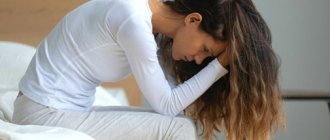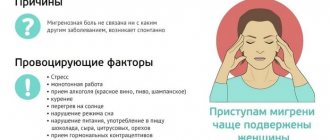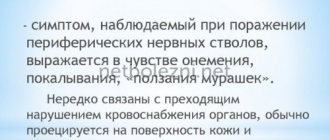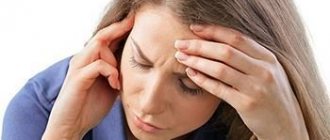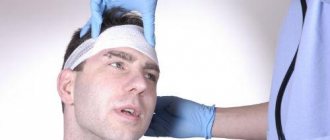A shooting headache is characterized by single “shots”, less often in a series. During their lifetime, 1–2% of the population may periodically experience lumbago; the question is how dangerous they can be, and whether it is worth sounding the alarm right away.
In its standard form, the pain is of medium or high intensity, as a rule, it more often affects women, and often occurs against the background of headaches of a different nature, for example, migraines. Painful sensations are localized in the area of the eyes and the front of the head, and from 1 to 50 attacks can occur per day.
First of all, it is necessary to rule out problems with the eyes: visit an ophthalmologist if attacks occur frequently and are characteristic of the same place in the eye area. If this is not an eye pathology, then shooting pain in the head may be a symptom of neuralgia.
Why does it shoot behind the ear?
A lumbago behind the ear may mean inflammation of the mastoid process.
A lumbago in the head behind the ear on the right, on the left is a sharp impulse in the head, an unreasonable pain. Shooting cranialgia is not an independent disease, but a symptom of various pathological conditions.
If there is a shooting behind the ear in the head, additional symptoms rarely occur. During severe attacks, patients may complain of nausea and vomiting, and dizziness. Body temperature often rises, numbness in the extremities bothers you, and your vision becomes dark.
With lumbago, the pain affects one side of the head and radiates to the ear, jaw, and neck. Attacks last several seconds or minutes, less often – 1-2 hours, and can occur 5-10 times a day.
Causes of lumbago in the head:
- Diseases of the ENT organs. With otitis media, sinusitis, and sinusitis, a twitching pain occurs near the inflamed organ and radiates to the head.
- Diseases of the musculoskeletal system. Unpleasant sensations in the head and ear area occur due to compression of nerve fibers. Twitching in the head with intervertebral hernia, osteochondrosis, arthritis of the joints of the lower jaw, osteomyelitis.
- Trigeminal neuralgia. Severe lumbago occurs on one side of the face. With neuritis of the facial nerve, pain behind the ear is one of the first signs of the disease. After 2 days, paralysis of the facial muscles on one side occurs.
- Dysfunction of the autonomic ganglia in diseases of the brain, nervous system, bone structures of the head and jaw. Shoots in the head behind the ear with inflammation of the jaw joints, vegetative-vascular dystonia.
- Often discomfort occurs due to lack of sleep, overwork, and during PMS. Shooting sensations occur with alcohol and toxic intoxication.
- Pain may indicate the presence of tumors and cysts, cerebral aneurysms.
- Ophthalmological diseases. In case of eye diseases, pulsation occurs in the frontal region, which gradually moves to other parts of the head.
- Traumatic brain injuries. Such pathologies require emergency medical care.
Sometimes headaches are a consequence of damage to peripheral nerve endings. Shooting occurs with fractures, gangrene, concussion, and inflammatory processes in internal organs.
Causes
The occurrence of shooting pain is caused by various disorders.
Spinal pathologies such as osteochondrosis, intervertebral hernia, protrusion, cervical spondylosis, and injuries lead to compression of the roots of the spinal nerve fiber and, ultimately, to the appearance of pain.
With neuritis of the trigeminal nerve, post-traumatic neuralgia, damage to the glossopharyngeal processes, toxic polyneuropathy, damage or compression of the peripheral processes occurs. The pain is localized at the site of the lesion. It is impulsive in nature. Lasts from 2 seconds to several minutes.
When pathologies such as an aneurysm, hematoma, cyst, malignant tumors, osteomyelitis of the jaw, or traumatic brain injury occur near the autonomic ganglia, compression and inflammation of the nerve fibers occurs.
Painful sensations also appear under the influence of infectious disorders of the organs of hearing and smell, such as purulent otitis media, sinusitis, and sinusitis.
What does the localization of lumbago in the head indicate?
Pain can occur due to inflammation in the muscles of the neck and back of the head.
If it shoots on one side, this indicates problems in the organs on the left or right side. Discomfort occurs when the ear, eye socket, or limbs become inflamed. Unpleasant sensations are disturbing if there is a tumor or an aneurysm, if the neck is blown.
Jerking pain in the occipital region indicates diseases of the cervical spine. With osteochondrosis and hernia, dizziness, tinnitus, weakness, and fatigue are additional concerns.
Shooting pain that radiates to the ear area occurs due to problems with the cervical spine, inflammation of the oropharynx, and hearing organs. Pain in the frontal area is a consequence of inflammation of the trigeminal nerve, runny nose, and sinusitis.
If it shoots in the crown area, this indicates problems with the spine. Jerking pain in the temples occurs when the temporal artery is damaged, inflammation of the temporomandibular joint, or trigeminal neuralgia.
Different bullets - different chances of survival
0
From a physics perspective, lethality is also affected by the mass and velocity of the fired bullet (especially velocity). For example, a bullet from an AK-47 assault rifle has an extremely high velocity. Bullets fired from an AK-47 are notorious for causing severe peripheral damage to critical areas of the brain as they pass, compared to the relatively slower bullets fired from a handgun. The US military most often uses 5.56 mm bullets. The mass of these bullets is less than that of conventional ones, but they have extremely high speed. As a result, they produce much more kinetic energy, which is then transferred to the target tissue, causing it to rupture.
What to do with shooting cranialgia
Using an ultrasound sensor, it is possible to find the problem of pain behind the ear.
Shooting pain cannot be ignored, since cranialgia appears in serious illnesses. First you need to see a therapist, the doctor will determine the frequency, location and duration of the attacks. After examination and initial diagnosis, he will write out a referral to an ophthalmologist, ENT specialist, neurologist, surgeon or vertebrologist.
Diagnostic methods:
- general and biochemical blood test;
- Ultrasound of internal organs;
- CT, MRI of the head, cervical spine;
- X-ray;
- dopplerography;
- electroneuromyography;
- ECG.
Based on the diagnostic results, the doctor will draw up a treatment regimen.
Diagnostics
The appearance of impulsive shooting pains can be associated with various factors, and if they are not detected and the necessary measures are not taken, the patient’s condition can rapidly deteriorate. Therefore, at the first occurrence of such pain, you should consult a therapist. He will clarify the characteristic features of pain, location, additional signs, and conditions of occurrence. Depending on the symptoms, he will give you a referral to visit a specialist in order to determine exactly why the pain occurred.
The otolaryngologist will conduct a thorough examination of the nasal cavity and hearing organs for the presence of sinusitis, sinusitis, and otitis media.
The neurologist will clarify the symptoms and check the reflexes. Prescribes a brain examination to exclude tumors, including malignant ones, cysts, and hematomas.
A verterbrologist examines the cervical spine and, if osteochondrosis, hernia, protrusion or displacement of the vertebrae is suspected, he will prescribe appropriate examinations.
In most cases, the patient additionally undergoes ultrasound diagnostics, radiography, magnetic resonance or computed tomography. In situations where there is a suspicion of vascular pathology, angiography is prescribed.
Effective treatments
Mastoiditis is treated with antibiotics and anti-inflammatory drugs.
If you have a shooting pain in the head, self-medication is dangerous. Painkillers only relieve discomfort, but do not eliminate the cause of its occurrence. Only a doctor can prescribe medications and select a safe dosage.
To treat lumbago in the head, the following drugs are used:
- non-steroidal anti-inflammatory drugs, analgesics;
- muscle relaxants, antispasmodics;
- corticosteroids;
- broad-spectrum antibiotics;
- chondroprotectors, pain-relieving ointments;
- nootropics, neuroprotectors, means for normalizing cerebral circulation;
- B vitamins;
- antiepileptic drugs;
- tranquilizers.
For severe diseases, drugs are prescribed by injection. Mild forms can be treated at home.
After the acute attack has stopped, physiotherapy is prescribed. For shooting headaches, applications with ozokerite or paraffin, UHF, magnetic therapy, electrophoresis, and galvanic current help.
How effective are folk remedies?
A warming compress can be used if there is no purulent inflammation.
For cranialgia, non-traditional methods should be used only in combination with medications. Folk remedies relieve pain, inflammation, and speed up the healing process.
You can get rid of shooting pain in the head at home in the following ways:
- Massage the crown, occipital region, and cervical region. You can use Zvezdochka balm, pain-relieving ointments, essential oils of mint, lavender, eucalyptus or juniper.
- Dry heat - make compresses with heated salt. Warming procedures are contraindicated at elevated temperatures and purulent processes.
- Prepare a solution of 3 parts Novocaine and 1 part Dimexide. Use for compresses.
Before using folk remedies, you should consult your doctor.
General description of the condition
The official name of the pathology is “cranialgia”. There is no need for provoking reasons for the appearance of paresis; pain occurs on its own unexpectedly. The anomaly can be characterized by the following features:
- a sudden painful impulse lasting from a few seconds to many hours (sometimes persistent);
- high intensity of pain, further intensifying when moving the eyeballs;
- it is impossible to touch the affected area, analgesics are also powerless;
- The temporal and occipital region suffers most often;
- there is a possibility of fever or vomiting;
- irradiation to the shoulder girdle, neck, shoulder blades;
- twitching sensations in the ears when hearing sounds;
- touching the face, smiling, coughing lead to new lumbago, “bell blows” inside the skull;
- arms and legs become numb, muscles are pulled, gait becomes swaying;
- gradually developing apathy to what is happening around, all thoughts are occupied with pain.
In the chronic course of the pathology, when it manifests itself quite often, intellectual and psychological changes occur, since pain displaces all other sensations and emotions. A person is busy only with himself, constantly expects an attack, becomes irritable, loses interest and the ability to remember basic data (for example, the security code of a plastic card or his telephone number).
How to avoid shooting pain in the head
The basis of a healthy immune system is proper nutrition.
To prevent the development of cranialgia, it is necessary to strengthen the immune system and lead a healthy and active lifestyle.
Prevention methods:
- follow a daily routine, get enough sleep;
- exercise regularly;
- when working sedentarily, do gymnastics for the eyes and neck every 2 hours;
- take vitamin complexes twice a year;
- avoid hypothermia, stress, overwork;
- follow safety rules when engaging in extreme sports.
Shooting pain in the head or behind the ear is a reason to visit a therapist or neurologist. Timely diagnosis and proper treatment will help avoid the development of complications and dangerous consequences of diseases.
Prevention
The use of certain preventive measures will reduce the intensity, reduce the frequency of painful manifestations, and eliminate the need for constant treatment:
- You need to take a break from any activity for a few minutes to do a light massage or exercise.
- Living spaces and workplaces should be regularly ventilated.
- It is important to follow the principles of proper nutrition, eat vegetables and fruits.
- In cold weather, try to avoid hypothermia, make sure that there is no air in the ears and neck area, and avoid colds.
Shooting pains are not an independent pathology. A thorough diagnosis will allow the doctor to identify what prompted its appearance and determine treatment tactics. With self-treatment, there is a high probability of developing complications. Simple preventive measures will help avoid shooting headaches.
